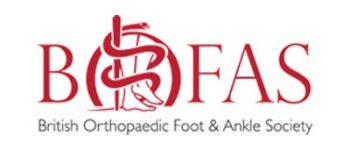ANKLE ARTHROSCOPY
Are you suffering with an ankle that swells and becomes painful when you’re active on your feet, or do you have pain when your ankle is in certain position?
Sometimes, if we’ve had a bad sprain of the ankle, we might damage the hard, shiny, articular cartilage surfaces deep within the ankle, and these can be treated with arthroscopic (keyhole) surgery.
Services
What Conditions Are Helped by Ankle Arthroscopy?
Some patients experience a kind of pain, the front of the ankle joint, or the back of the ankle joint, which occurs when either the foot is fully flexed up towards the shin (called dorsiflexion), or when the foot is pointed fully downwards. This can generate a nipping type problem in the ankle (called anterior (at the front of the ankle) or posterior (at the back of the ankle) impingement.
Anterior impingement is the most common type and usually happens because of the formation of bony spurs at the front edge of the ankle joint causing inflammation of the soft tissues there especially when the ankle is in the dorsiflexed position.
This usually starts because of trauma to the ankle, or certain sports, such as football. It is often known as ‘footballer’s ankle’.
Sometimes, trauma, e.g. a bad sprain, can knock corners of the cartilage surfaces within the ankle, producing ‘loose bodies’ which may need to be removed. Sometimes larger cartilage defects can occur within the ankle, that need surgical help to heal.
If you haven’t improved with physiotherapy, osteopathy, or injection treatments, I may recommend an arthroscopy of your ankle.
What is the Recovery Like After an Ankle or Subtalar Arthroscopy?
For the majority of procedures apart from fusions, you will be fully weight bearing immediately after surgery. You will be able to walk out of hospital on your ankle the same day with little discomfort.
Some patients will leave hospital with crutches to support them if necessary. I’ll give you specific instructions about when and how much you can weight bear, depending on what procedures were carried out during the arthroscopy.
I will usually ask you to rest and elevate your leg for the first week doing gentle up and down movements. You can take your bandages of after a week but leave the sticky plaster dressing in place until I see you in two weeks to check the portal sites are healed and take the sutures out. Once the sutures are out, physiotherapy and rehabilitation can commence as well as a gradual resumption of normal activity.
Swelling of the ankle can persist for a few months afterwards and this is very variable and patient-specific. The good news is that it is nothing to worry about and perfectly normal. You can also be reassured that any swelling will settle back to how it was before surgery. For ankle impingement research studies suggest people can continue to get improvement from the operation for 18 months after their surgery.
Posterior Ankle Arthroscopy
If posterior ankle impingement is diagnosed, then I may recommend a posterior ankle arthroscopy. This is an advanced type of keyhole surgery which not all specialists can do. Often the cause of this type of impingement is an extra bone at the back of the ankle joint called an os trigonum.
Not everyone has one, but sometimes it can be large enough to persistently become trapped between the tibia and the calcaneus causing pain when the foot is pointed downwards in plantarflexion. This extra bone can be removed using special instruments via keyhole surgery. Sometimes the FHL tendon can become trapped near the os trigonum where it passes into a tight tunnel. This tunnel can be opened up and widened with keyhole surgery to help. Sometimes posterior ankle arthroscopy is needed to treat cartilage lesions right at the back of the talus also.
If there has been damage to the cartilage surfaces (e.g. of the talus bone) which is leaving some exposed bone, I may need to perform a technique called microfracture and bone marrow stimulation. This involves gently tapping some tiny holes on the surface of the exposed bone. This allow mesenchymal stem cells to migrate to the surface which eventually turn into cells that make fibrocartilage. Although not as good as the original hyaline cartilage you were born with, this fills in the gap and is great at stopping pain from osteochondral lesions of the talus. This technique doesn’t work as well if the cartilage lesions are very large.
Sinus Tarsi and Subtalar Arthroscopy
After the necessary clinical examination and investigations, you may be diagnosed with sinus tarsi syndrome. This can be caused by a bad ankle sprain and result in painful inflammatory tissue in the sinus tarsi. The sinus tarsi is a small cave-like area in the subtalar joint which is the joint under the ankle joint. Pain is often felt on the outside of the foot under and just in front of the end of the fibula bone. Keyhole surgery can be done to remove the painful inflammatory tissue and put an end to symptoms quickly. This is not a standard procedure that all specialists can do.
Subtalar arthroscopy is an advanced type of keyhole surgery which not all specialists can do. I use this technique to perform subtalar fusions. A subtalar fusion is needed either to permanently correct a severe foot deformity or to stop pain from end stage subtalar joint arthritis. Using keyhole surgery, the diseased cartilage is removed exposing the underlying bone on both joint surfaces. The bone surfaces are freshened and stimulated then put together in the optimum position. They are then compressed together with screws to allow the two bones to fuse together. This process typically takes 6 weeks and during this time no weight can be put on the foot so that the two bones involved can heal and fuse together as quickly as possible.
What Happens During Ankle Arthroscopy?
Ankle arthroscopy is a day case operation, so you’ll go home the same day. It’s usually carried out under a light general anaesthetic, and I make a couple of very small incisions, through which I can pass a tiny camera on a stick (an arthroscope), and some instruments to do the repair work.
In order to be able to get into and see around the ankle, the ankle is placed under a little gentle traction intermittently, and sterile fluid is pumped into the ankle joint, so that it distends. I can get in between the bones and have really good look around.
If there are bony spurs that are blocking the ankle at the front (creating impingement), I can gently burr these away. If thee are areas of inflammatory soft tissue causing pain, I can clear this away also.
I also use ankle arthroscopy to perform arthroscopic ankle fusions. Some people with end stage ankle arthritis who are suitable for an ankle replacement will require an ankle fusion. I tend to do this using minimally invasive arthroscopic techniques. Using keyhole surgery, the diseased cartilage is removed exposing the underlying bone on both joint surfaces.
The bone surfaces are freshened and stimulated then put together in the optimum position. They are then compressed together with screws to allow the two bones to fuse together. This process typically takes 6 weeks and during this time no weight can be put on the foot so that the two bones involved can heal and fuse together as quickly as possible.










